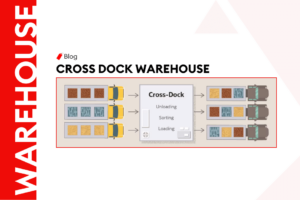Home » Services » Door to Door » IMEA » India » Important Information India
Bridging Markets, Building Futures: Trade with Ease Between UAE and India
UAE-India
Important Information
Find essential details on taxes, tariffs, restricted goods, cargo regulations, and holidays impacting UAE-India trade operations.
UAE Tariffs and Taxes
Goods traded with the UAE are subject to customs duties ranging from 0% to 5%, depending on the product type. VAT is generally applied at a standard rate of 5%, covering goods imported into the UAE. Certain goods, such as tobacco and alcohol, incur higher excise duties.
India Tariffs and Taxes
India’s import duties vary by product classification, with rates ranging from 0% to 10% on essential items and up to 100% on luxury goods. A Goods and Services Tax (GST) is applied at rates of 5%, 12%, 18%, or 28%, depending on the product category.
Restricted/Licensed Goods
Overview of items requiring special permits or licenses for trade between UAE and India:
- Pharmaceuticals and medical devices
- Precious metals and stones
- Electronics and telecommunication equipment
- Chemical and hazardous materials
- Agricultural products and livestock
- Defense and security-related items
- Dual-use items with potential military applications
Permissible Weights and Dimensions
This section outlines the permissible weights and dimensions for transporting cargo to and from India, ensuring compliance with road transport regulations.
- Small Truck
Length: 6 meters
Width: 2.2 meters
Height: 2.5 meters
Maximum Weight: 7 tons
Maximum Axle Load: 3 tons
Driven Axle Weight: 4 tons
- Medium Truck
Length: 9 meters
Width: 2.5 meters
Height: 3 meters
Maximum Weight: 16 tons
Maximum Axle Load: 6 tons
Driven Axle Weight: 8 tons
- Heavy Goods Vehicle
Length: 12 meters
Width: 2.5 meters
Height: 4 meters
Maximum Weight: 40 tons
Maximum Axle Load: 10 tons
Driven Axle Weight: 12 tons
Local Holidays
This section highlights significant local holidays in India that might affect trade schedules, ensuring efficient planning of cargo operations.
- January 14: Makar Sankranti
- January 26: Republic Day
- March/April: Holi (dates vary yearly)
- August 15: Independence Day
- August/September: Ganesh Chaturthi (dates vary yearly)
- September/October: Dussehra (dates vary yearly)
- October 2: Gandhi Jayanti
- October-November (varies): Diwali Festival
- Eid al-Fitr (varies): Eid al-Fitr
- December 25: Christmas
Frequently Asked Questions (FAQ)
What are the cargo handling capacities of major airports in India involved in UAE-India trade?
Indira Gandhi International Airport can handle over 1.8 million metric tonnes annually and features state-of-the-art cold storage facilities. Chhatrapati Shivaji Maharaj International Airport supports over 591 thousand metric tons of cargo each year and is equipped with dedicated freight terminals, and lastly, Kempegowda International Airport facilitates around 150,000 tonnes per year and offers extensive warehousing with a high-tech security system.
What are the main seaports in India for cargo operations between UAE and India, and what are their capabilities?
Mundra Port in Gujarat can handle over 338 million metric tonnes (MMT) of cargo annually and is the largest container port in India. Nhava Sheva (Jawaharlal Nehru Port) in Maharashtra handles over 5 million TEUs annually and has advanced deep-water berths, and lastly, Chennai Port in Tamil Nadu facilitates roughly 3,000,000 TEUs of cargo annually and has specialized automotive cargo handling capabilities.
What are the import duty rates and tax structures in the UAE and India for goods traded between the two countries?
In the UAE, goods are subject to customs duties ranging from 0% to 5%, with a standard VAT rate of 5%. Excise duties are higher for specific goods like tobacco and alcohol. In India, import duties vary by product, with rates ranging from 0% to 100% for luxury goods. Goods and Services Tax (GST) rates are 5%, 12%, 18%, or 28%, depending on the product category.
What documents are required for importing goods into India?
Essential documents for importing into India include a Commercial Invoice, Certificate of Origin, Bill of Lading or Airway Bill, Import License (if applicable), Packing List, Insurance Certificate, Customs Declaration Form, and an Importer Exporter Code (IEC) Certificate.
What are the typical payment methods and terms for trade between the UAE and India?
Common payment methods include bank transfers (SWIFT), Letters of Credit (LC), and Documentary Collections (DC). High-value transactions may use escrow accounts. Typical payment terms include credit periods of 30-60 days, which can be negotiated based on the trade relationship and market conditions. Transactions often use the UAE Dirham (AED), Indian Rupee (INR), and US Dollars (USD) for ease of international trade.
Related Articles
Anything you need, We’re here to Help

Chat With Us
Effortlessly schedule your next shipment with us for reliable and timely delivery.

Request a Quote
Receive a personalized shipping quote that meets your specific logistic needs.









